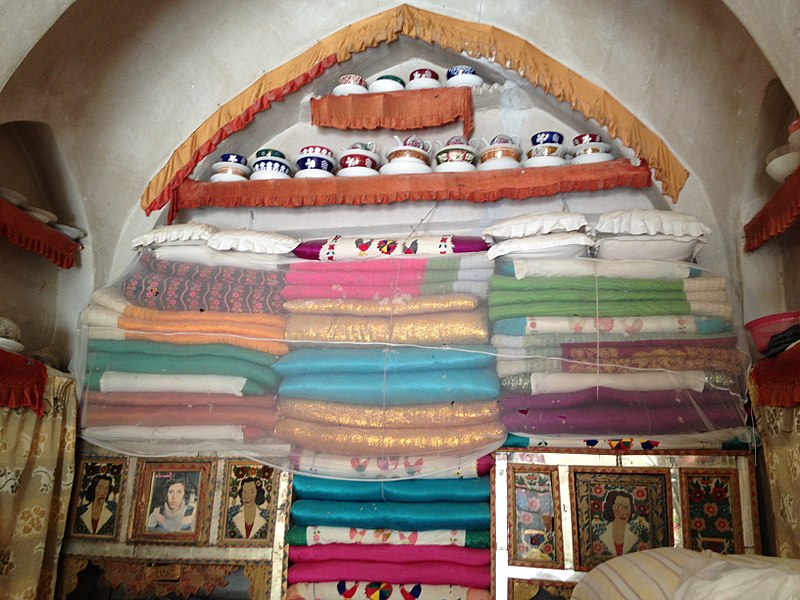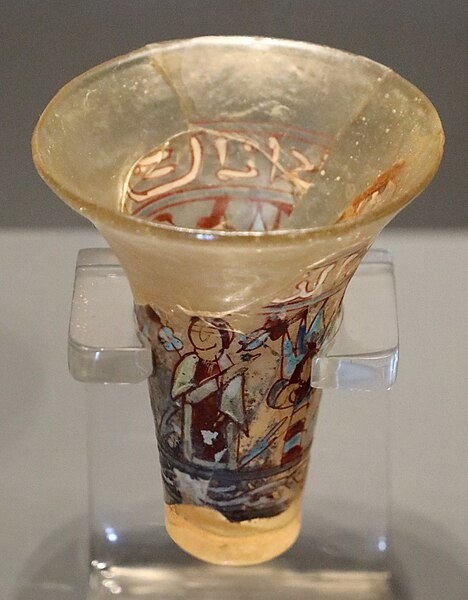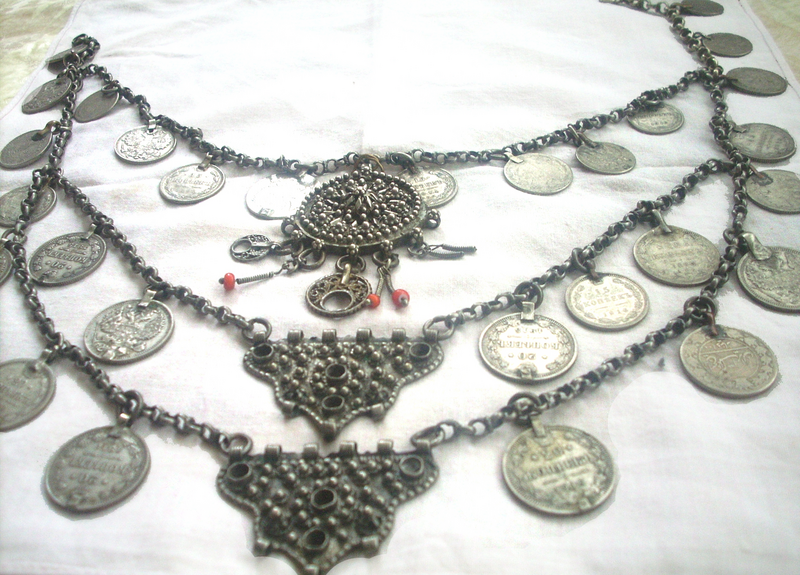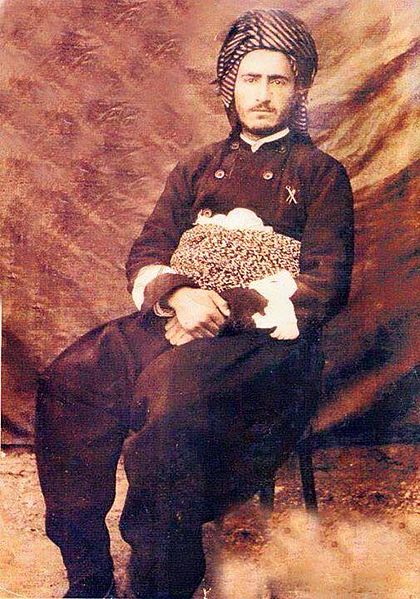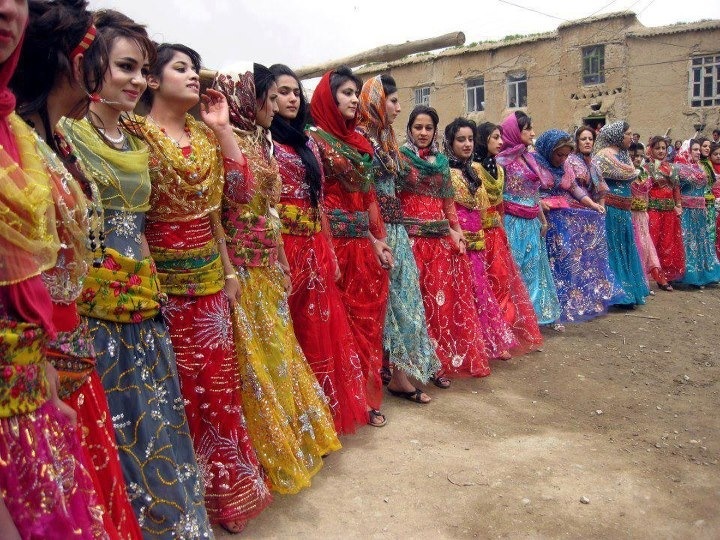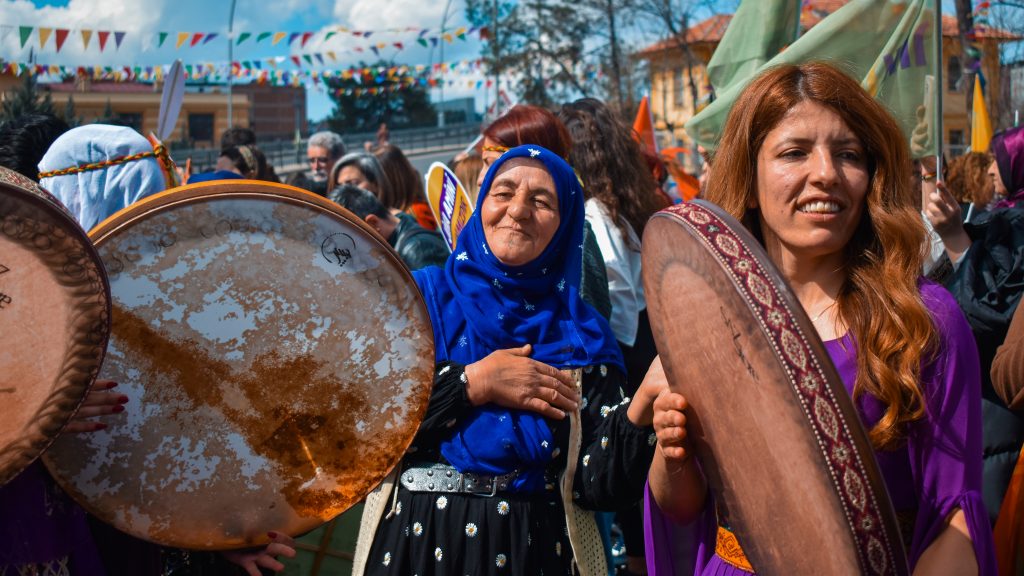-
Kurdish culture is one of the oldest and most diverse in the Middle East.
-
Over the centuries, the Kurds, living on the border of different civilizations, have developed a unique identity, which they still cherish today.
-
Rich traditions, a strong sense of community and a love of art and nature are hallmarks of Kurdish culture.
Traditional attire
The traditional clothing of the Kurds is not only aesthetically pleasing, but also functional, adapted to the changing climatic conditions of the region. Both men and women wear outfits decorated with patterns, often handmade, reflecting high craftsmanship.
Men wear wide pants called “şal” and vests or tunics that are tied with a wide belt. They often wear a turban or cap on their heads.
Women dress in long, colorful dresses decorated with embroidery. They wear headscarves or turbans, and their outfits are often decorated with jewelry.
Family traditions and customs
Family and community play a key role in Kurdish life. Kurdish families are usually multi-generational, and bonds between family members are very strong. In Kurdish culture, attachment to family and respect for elders are values that are passed down from generation to generation.
Kurds have elaborate customs related to different stages of life, such as:
Birth of
The birth of a child is a special moment during which family and friends pay visits and bring gifts.
Wedding
A Kurdish wedding is a real celebration, lasting several days, with dancing, music and colorful costumes. Wedding dances are an important part of the ceremonies, in which the entire community participates.
Mourning
Kurds attach great importance to mourning, which is expressed in the observance of various rituals, such as visiting the family of the deceased and praying together.
Arts and crafts
The Kurds have a long artistic tradition, including various forms of arts and crafts that reflect their culture and relationship with nature.
Carpets and fabrics
The Kurds are known for their skill in weaving carpets and kilims, which are hand-decorated and have intricate designs, often with symbolic meanings.
Ceramics and pottery
Ceramics play an important role in the daily lives of Kurds. Artisans create vessels that are practical and aesthetically pleasing, often decorated with traditional designs.
Jewelry
Kurds, especially women, wear beautiful handmade jewelry made of precious metals such as silver. The jewelry serves not only a decorative function, but also symbolizes status and regional identity.
Music is an integral part of Kurdish culture, and its traditions are passed down orally from generation to generation. Kurdish folk music, performed on traditional instruments such as the “tambur” (stringed instrument) and the “daf” (frame drum), accompanies most major events.
Kurdish dances are lively and full of energy, and are characterized by holding hands in a large circle. These dances, called “govend” or “dabke,” symbolize unity and togetherness. The dances are often held outdoors, in squares or around bonfires, and are an integral part of weddings and holidays.
The tradition of storytelling
Kurdish culture has deep roots in oral tradition. Stories, legends and poetry are an essential part of social life. Storytelling is an art form, as well as a way of transmitting wisdom and values. Traditional storytellers, known as “dengbejas,” are respected members of the community and can recite epics about heroes, tales of love, adventure and the struggle for freedom for hours.
Celebrations and holidays
Kurds celebrate many traditional holidays, the most important of which is Nowruz, the New Year celebrated on the day of the spring equinox. Nowruz is a time of joy, family and community gatherings, and lavish outdoor celebrations. It is one of the most important events of the year, symbolizing rebirth, new beginnings and hope.
During Nowruz, residents gather around bonfires, dance, sing and hold communal meals. The ceremonies are family-oriented and an opportunity to express solidarity and Kurdish identity.
Respect for nature
Kurds have a strong sense of connection to nature. Many Kurdish customs and beliefs are closely tied to nature and natural cycles. Living in mountains and areas with harsh climates, the Kurds have developed strong ties to the environment around them.
Respect for the land and animals is evident in many aspects of their daily life and the holidays they celebrate. They often emphasize the beauty of nature, which manifests itself in both literature and art.
Graphic sources:
- Kurdirasti, CC BY-SA 4.0 <https://creativecommons.org/licenses/by-sa/4.0>, via Wikimedia Commons
- Francesco Bini, CC BY-SA 4.0 <https://creativecommons.org/licenses/by-sa/4.0>, via Wikimedia Commons
- Sarbast.T.Hameed, CC BY-SA 4.0 <https://creativecommons.org/licenses/by-sa/4.0>, via Wikimedia Commons
